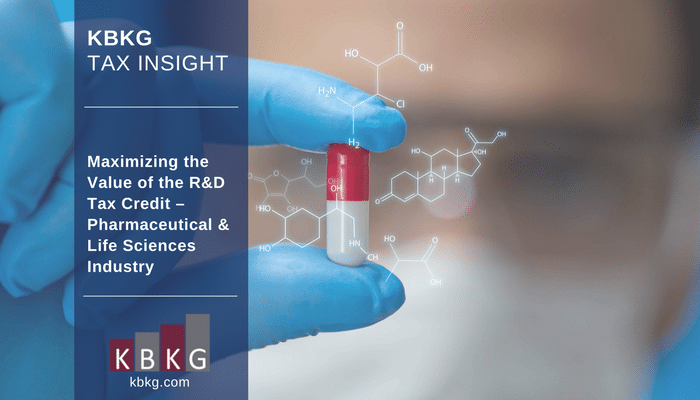It is no secret that many Pharmaceutical and Life Sciences companies (“Companies”) conduct research and development activities that qualify for numerous tax incentives, including the Research and Development (R&D) tax credit. Recent groundbreaking legislation created a level of certainty for tax planning purposes and also includes provisions geared towards providing significant benefits to small businesses and start-up companies.
While Companies are beginning their tax planning for the coming year, it is an optimal time for management to evaluate whether they are taking full advantage of the R&D tax credit.
For instance, there are often additional benefits left unclaimed and/or fully maximized due to a lack of knowledge, expertise and/or resources. Historically, the following areas were thought to be high-risk and/or too complicated to substantiate. Therefore, all or a portion of the related expenditures were excluded from the calculation of the R&D tax credit.
- Bonuses and Stock Compensation
- Collaboration Agreements
- Contract Research
- Direct Support/Supervision
- Foreign Activities
- High-Level Executives
- Intragroup Transactions
- Job Titles
- Milestone Payments
- Non-traditional R&D Cost Centers
- Phase IV activities
In addition, Pharmaceutical and Life Sciences companies are undoubtedly engaged in activities beyond the traditional development of new or improved pharmaceuticals, therapies, biologics, compounds or medical devices. These activities should not be disregarded without considering its potential qualification. Some examples of these activities may include the design and/or development of a new or improved:
- Automation processes
- Assay procedures
- Devices used for testing purposes
- Drug delivery systems
- Factory or production lines
- Formulations and/or applications
- Further development to improve shelf-life
- Hardware and software systems
- Manufacture of clinical trial lots
- Manufacturing processes
- Pharmaceutical Packaging
- Prototypes
The above discussion highlights just some of the areas where additional benefits continue to go unclaimed. Substantiation is the key to establishing qualification. The company must identify, review, analyze and document the qualified nature of the activities and related expenditures. The analysis should be considered in light of your company’s specific facts and circumstances and should include evidentiary documentation.
Action Step: There may be significant tax savings related to the above that went unclaimed in the past. Pharmaceutical and Life Science executives may want to take another look at their R&D tax credit calculations to ensure that they are claiming the maximum available benefit that they are otherwise eligible to claim.
Author: Liz Wallace, MS, JD, LL.M


